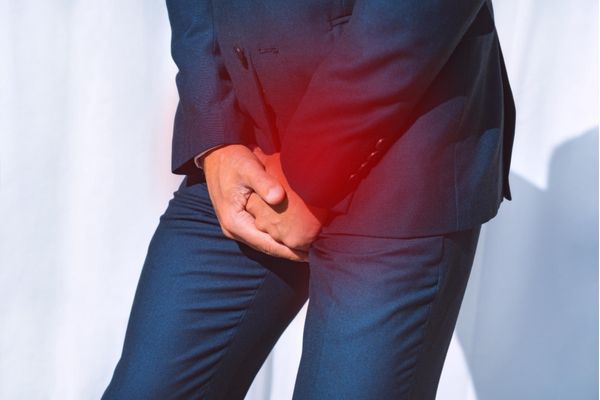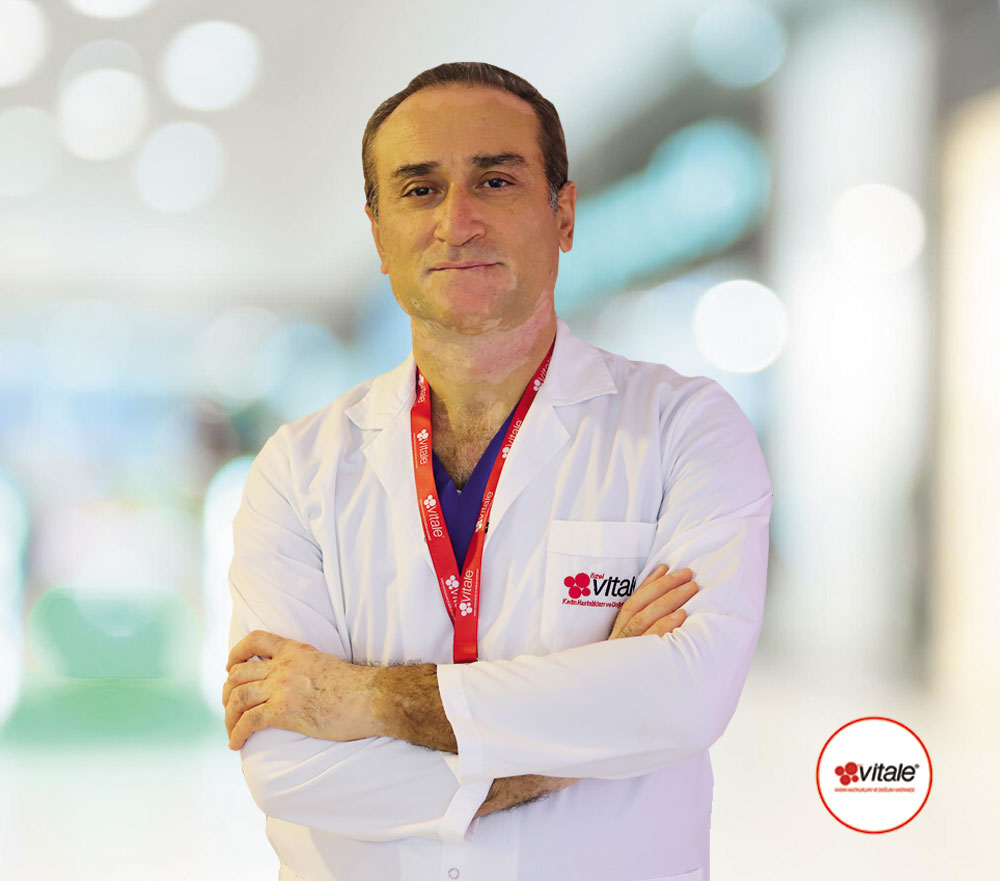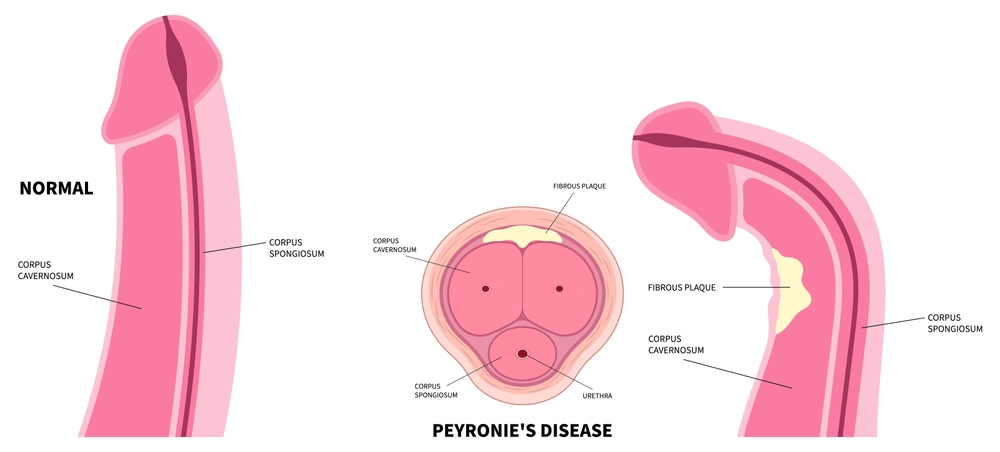Peyronie’s Disease Treatment in Turkey
Peyronie's Disease Treatment Surgery at Vitale Hospital


What is Peyronie’s Disease?
Peyronie’s disease is a condition characterized by the development of fibrous scar tissue (plaques) within the penis, causing it to curve or bend during an erection. This penile curvature can lead to discomfort or pain and may interfere with sexual activity, self-confidence, and overall quality of life. While some degree of curvature can be normal, Peyronie’s disease usually involves a more significant bend, making erections painful and challenging.
Table of Contents
ToggleThe exact cause of Peyronie’s disease isn’t entirely understood, though it often occurs after physical trauma to the penis. The disease can progress over time, with symptoms ranging from mild to severe, and without treatment, it may worsen and further impact sexual function.
What Causes Peyronie’s Disease?
Peyronie’s disease is thought to result from injury to the penis, which can cause internal bleeding and scarring. Here are some of the main contributing factors:
- Injuries sustained during sexual activity, physical activity, or accidental impacts can cause micro-tears within the penile tissue, leading to scarring.
- A family history of Peyronie’s disease or connective tissue disorders may increase susceptibility.
- Peyronie’s disease is more common in middle-aged and older men, as tissues lose elasticity with age and become more prone to scarring.
- In some cases, Peyronie’s disease may result from an autoimmune response where the body mistakenly targets and damages healthy tissue.
Understanding these factors is crucial for diagnosis and treatment, as identifying the underlying cause can help determine the best approach for each patient.
How is Peyronie’s Disease Diagnosed?
Diagnosing Peyronie’s disease typically involves a physical examination and imaging tests to assess the degree and location of the curvature. Here’s an overview of the diagnostic steps:
The doctor will ask about symptoms, including the severity of the curve, pain levels, and any history of trauma. During a physical exam, they may feel for plaques or hardened areas along the penile shaft to assess the extent of the condition.
An ultrasound provides a detailed view of the internal structures, allowing doctors to locate plaques and measure blood flow. This test helps determine the size and position of scar tissue and confirms the severity of Peyronie’s disease.
In some cases, the doctor may request that the patient provide photos of the erect penis to help visualize the curvature, which can assist in planning treatment.
How is Peyronie’s Disease Treated in Turkey?
Peyronie’s disease treatment in Turkey offers a variety of methods, including both non-surgical and surgical options. The appropriate treatment depends on the disease stage, severity of curvature, and patient preferences.
Recovery from Peyronie’s Disease Surgery
After surgical treatment, most patients require several weeks to recover fully, with gradual improvement in sexual function and comfort. Patients are advised to avoid strenuous activities and sexual activity during this period to ensure proper healing and optimal results.
Pre- and Post-Operative Care for Peyronie’s Disease Treatment in Turkey
Before Treatment:
- Patients should provide a complete medical history and undergo a detailed consultation to choose the best treatment option.
- Smoking can interfere with healing, so patients are advised to quit smoking before and after treatment.
- Certain medications, especially blood thinners, should be avoided as directed by the doctor.
After Treatment:
- Regular follow-up visits are essential to monitor recovery and assess treatment effectiveness.
- Patients should avoid sexual activity for at least 4-6 weeks, depending on the specific procedure, to allow for full healing.
- A balanced diet, hydration, and avoiding tobacco can support healing and reduce the risk of complications.
Doctors
Op. Dr. Kemal BULUT
Urology Specialist

Cost of Peyronie’s Disease Treatment in Turkey: Affordable and Comprehensive Options
The cost of Peyronie’s disease treatment in Turkey varies depending on the method chosen, the clinic, and the specialist’s experience. Turkey offers competitive prices for both surgical and non-surgical treatments, making it an attractive destination for international patients.
- Initial consultations and diagnostic tests
- Treatment procedures (non-surgical or surgical)
- Post-treatment follow-up and monitoring
By choosing Turkey for Peyronie’s disease treatment, patients gain access to high-quality, cost-effective healthcare from experienced specialists in a supportive, advanced medical environment.
FAQ
Surgery is generally very effective for correcting penile curvature caused by Peyronie’s disease, particularly in severe cases. While it may not completely eliminate all curvature, most patients experience significant improvement in both function and comfort.
Recovery time varies based on the type of surgery, but most patients can resume regular activities within 4-6 weeks. Full recovery, including resuming sexual activity, may take a few months for optimal results.
Non-surgical treatments like collagenase injections or shock wave therapy can be effective in reducing curvature and relieving pain, especially in the early stages of the disease. However, these methods are less effective in advanced cases and may not fully correct severe curvature.
The cost depends on the treatment type and specialist’s experience, with surgical options typically costing more than non-surgical methods. Vitale Hospital offer competitive prices and all-inclusive packages to ensure affordable, quality care for international patients.


